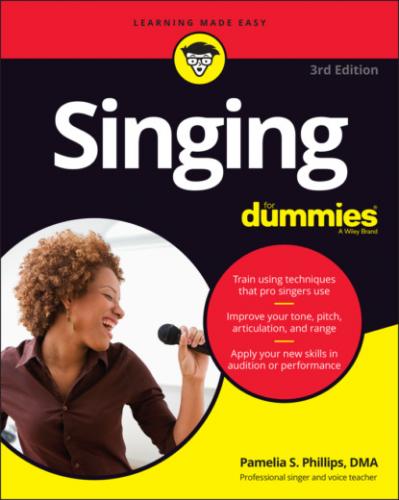Lower female voices: Listen to Beyoncé singing “Halo” and Adele singing “Hello.” They both comfortably sing an octave below Middle C in the songs, but the big difference is when they start moving higher. Beyoncé narrows her sound as she ascends, making it sound easy for her to belt that high whereas Adele has much more weight in her voice. High sopranos would find it difficult to sing these two low songs much less stay that low, yet these two women are comfortable singing low in their range.
Comparing a higher and lower female voice: For bright and high sounds listen to Cyndi Lauper singing “Girls Just Want to Have Fun” compared with the deeper and lower voice of Karen Carpenter singing “Rainy Days and Mondays.” Both are terrific performers, but there is a difference in the timbre of the voices. The songs have a difference in their ranges, and both show the comfort zone of the performer. Lauper is super comfortable singing high whereas Carpenter is comfortable singing low.
Higher male voice: Compare Maxwell singing “Pretty Wings” with David Phelps singing “I Have Nothing.” Maxwell is singing high notes, but it sounds easy because he’s so comfortable singing in that tessitura (the tessitura or comfort zone of his voice is high.) Phelps also sings high, but the weight of his voice makes those same notes sound heavier or fuller. Phelps’s voice is heavier or fuller whereas Maxwell’s voice is lighter.
Lower male voices: Compare the sounds of baritone Darius Rucker singing “Wagon Wheels” with bass-baritone Josh Turner singing “Your Man.” Both sound lower than the tenor, but Rucker has more height in the tone compared to Turner who has more depth especially on low notes. Turner has deeper notes so he sounds like a bass-baritone, and Rucker sounds more like a baritone.
Comparing higher and lower male voices: Compare tenor Justin Timberlake singing “Can’t Stop The Feeling!” with baritone John Raitt singing “Shenandoah” and bass-baritone Paul Robeson singing “Some Enchanted Evening” from South Pacific. When you hear these three voices in a row, you can hear how the baritone voice fits right in the middle between the tenor and the bass-baritone.
Chapter 3
Aligning Your Body for Great Singing
IN THIS CHAPTER
To sing efficiently, you need to line up all your body parts and get them ready to do their job with as little tension as possible. If you’re slumped over, you have more trouble taking the breath you need to sing because posture and tension directly affect the muscles. Tension in your body also prevents you from taking a deep breath and makes singing more difficult. In this chapter, you discover how to create spot-on, tension-free posture so you can project confidence and sing your best.
Evaluating Your Posture
In front of a full-length mirror, look at your posture. Notice the way you hold your body, especially your head, chest, hips, knees, arms, and hands. More than likely, after you looked in the mirror, you changed your posture. Did you change your posture because you thought your body may work better or because you thought you may look better? For singing, you evaluate your posture for both reasons. Aligning your body properly puts all the muscles that help you sing in the right position. Proper alignment gets you singing better and also makes you appear confident and professional.
Look at Figure 3-1 and check out the alignment of the skeleton. Take some time to study the skeleton and notice the connection of bones. Throughout the chapter, I point out the particular area of the skeleton you’re aligning.
© John Wiley & Sons, Inc.
FIGURE 3-1: Ideal alignment of the skeleton.
Creating Ideal Posture
Creating ideal posture means finding out what ideal posture looks like and feels like so that you can quickly make whatever changes you need. By changing your posture, you control what kind of impression you make on others — whether you’re on the stage singing or at the audition vying for the show’s lead. Good posture keeps energy flowing instead of trapping it in one body part, and it also aligns your body for efficient breathing. See Chapter 4 for more information about breathing for singing. Read on for ways to align your body for great singing.
Feeling grounded on your feet
The root of good posture is the position of your feet and the balance of weight on your feet. Seems like the feet are a long way from the singing process, but equal distribution of weight on the feet allows all the muscles to stay released so you can make gorgeous sounds. Try this sequence to find the balance of weight on your feet.
1 While you’re standing, roll your foot to find the tripod.Roll your foot on the floor to make a circle that moves from your heel through the outside of your foot, across your toes, and down the inside of your foot. As you roll the foot, you feel the heel bone in the back of your foot, a bone or protrusion under your little toe, and another protrusion or bone under your big toe. Roll among these three points several times so that you really feel the
